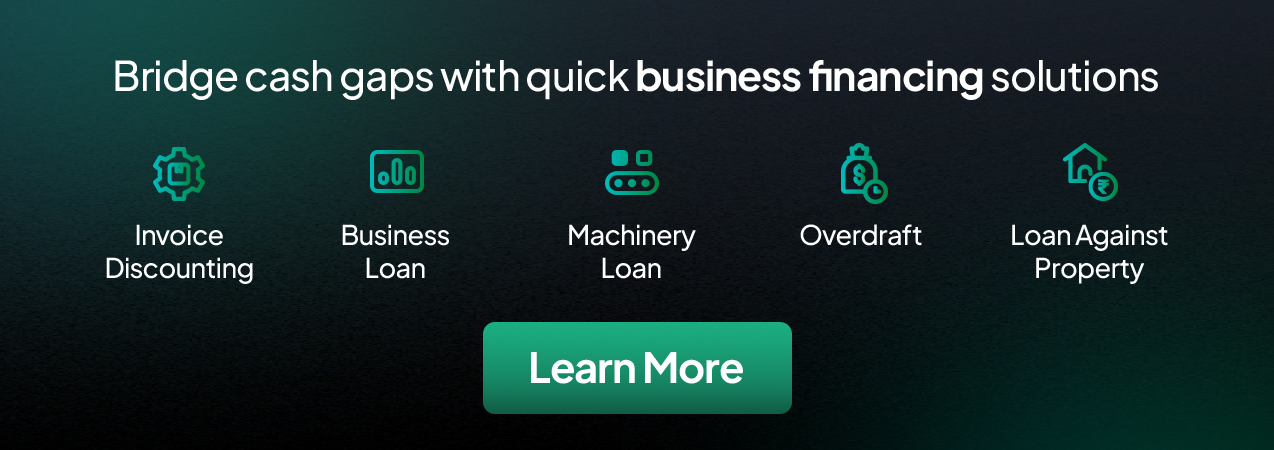Top 5 Government MSME Schemes You Need To Know

With a contribution of 30% to the national GDP, the Micro, Small, and Medium Enterprises (MSME) sector has emerged as a prominent contributor to the Indian economy. Around 94 lakh people are employed in the 77.35 lakh registered MSMEs in the country, which constitutes nearly 48% of the country’s overall exports.
Non-availability of adequate funds at a reasonable interest rate is one of the most important challenges MSMEs face. Banks have a flawed perception that this sector is high-risk, leading to low availability of loans for MSMEs and insistence on collaterals from these enterprises. New entrepreneurs and micro enterprises do not have the funds to secure collateral and are left with very few options to raise funding.
The Indian Government aims to achieve inclusive growth and self-reliance for the MSME sector.
The MSME schemes introduced by the Government help alleviate common challenges encountered by MSMEs like obsolete technology, non-registration of enterprises, inadequate credit, negligible market linkages, etc. Among the almost 200 msme schemes, there are five important ones you need to know.
Pradhan Mantri Mudra Yojana
The Pradhan Mantri Mudra Yojana is a refinancing scheme for lending to small and micro enterprises in the manufacturing, trading, or service sector. The loans offered by this scheme are also called MUDRA loans (Micro Units Development Refinance Agency). This MSME scheme provides banks with refinancing facilities against the loans offered to small businesses.
What does this MSME scheme cover?
MSME loans up to 10 lakhs are supported through PMMY. The interest rates depend on the bank but are usually set at reasonable rates as guided by the MSME scheme. The repayment tenure is set to five years. According to the MSME funding needs, there are three products in PMMY.
- Shishu - Covers loans up to ₹50,000 for startups and new businesses.
- Kishor - Covers loans between ₹50,000 - ₹5 lakh for buying raw materials and new machinery.
- Tarun - Covers loans between ₹5 lakh - ₹10 lakh for established enterprises.
One of the key benefits of MUDRA loans is that borrowers don’t have to provide collateral to avail MSME funding. Also, there are no loan processing charges.
How to apply for PMMY?
MSMEs can approach commercial banks, small finance banks, cooperative banks, regional rural banks, and micro finance institutions (MFIs) to apply for MUDRA loans. The applicant has to submit a loan application form along with identity proof, address proof, and business proposal to the bank of their choice. Once the bank approves the loan under the MUDRA scheme, the loan amount is provided through a pre-loaded MUDRA card which is a RuPay debit card. This card will allow borrowers to seamlessly withdraw necessary amounts from an ATM up to ₹25,000 per day.
Credit Guarantee Fund Scheme for Micro and Small Enterprises
The Indian Government launched the Credit Guarantee Fund Scheme for Micro and Small Enterprises (CGS) to provide credit guarantees on collateral-free term loans for MSMEs. This scheme covers the funds that MSMEs have borrowed from lending institutions and provides a percentage of the term loan to the lender in case of default or the loan turning into a non-performing asset (NPA). This MSME scheme builds confidence in lending collateral-free loans to MSME units and ensures swift financial assistance. Existing and new enterprises are eligible to apply for this type of MSME funding.
What does this MSME scheme cover?
Micro and Small enterprises can avail credit guarantee for amounts up to ₹200 lakh per eligible borrower. The details of guarantee cover for Micro enterprises are as below -
- Covers 85% of the amount for credit up to ₹5 lakh.
- Covers 75% of the amount for credit between ₹5 lakh - ₹50 lakh.
- Covers 50% + ₹37.5 lakh for credit above ₹50 lakh up to ₹200 lakh.
The guarantee cover for MSMEs operated or founded by women is 80% of the loan amount, while it is 50% of the sanctioned amount for credit between ₹10 lakh and ₹100 lakh for retail trade activities. The cover is applicable for the tenure of the term loan.
How to apply for Credit Guarantee Fund Scheme?
MSMEs can apply for the MSME loans under CGMSE through public sector banks, private sector banks, and regional rural banks classified as ‘Sustainable Viable’ by the National Bank for Agriculture and Rural Development (NABARD).

Credit Linked Capital Subsidy
The Credit Linked Capital Subsidy (CLCS) aims to help MSMEs improve their technology to boost revenue generation. Often, MSMEs in rural and semi-urban areas are forced to work with obsolete technologies because they don’t have enough funds to upgrade their machinery. The CLCS facilitates technology upgradation for MSMEs through an upfront capital subsidy of 15% on loans from financial institutions. The upper limit for the subsidy is ₹1 crore. The key objective of this MSME scheme is to equip MSMEs with state-of-the-art technology with or without expansion. Khadi, village, and coir industrial units are also included in this MSME finance scheme.
How to apply for Credit Linked Capital Subsidy?
To claim the subsidy under this MSME scheme, borrowers are required to apply through Primary Lending Institutions (PLIs). PLIs will then forward the application to the attached nodal agency. The nodal agency sends the application to the Office of Development Commissioner (MSME) for approving and releasing the subsidy.
After processing the application and subject to the availability of funds, the subsidy is released to the nodal agencies, which then transfer the funds to the PLI of the MSME applicant.

Micro Finance Program
The Micro Finance Programme has been launched for under-served States and under-served pockets of other States. Existing micro-credit programs had limited reach and fulfilled only up to 10% of the credit requirements of MSMEs. The Micro Finance Program was started to improve the reach of micro-credit programs and reduce the financial burden on micro finance institutions (MFIs) and non-governmental organizations (NGOs).
MFIs and NGOs source funds from the Small Industries Development Bank of India (SIDBI) and make them available to MSMEs. Since SIDBI offers only secured loans, MFIs and NGOs have to make a security deposit for loans, which is 10% of the loan amount. The Micro Finance Programme helps reduce this financial burden by covering the security deposit to SIDBI. The funds paid by the Government under this program are called Portfolio Risk Funds (PRF).
What does this MSME scheme cover?
MFIs and NGOs have to pay 2.5% of the loan amount as a security deposit, while the remaining 7.5% is funded from the Portfolio Risk Fund. SIDBI will pay interest to the Government and MFIs/NGOs on the security deposit amount.
How to apply for Micro Finance Program?
MFIs and NGOs can apply for this MSME scheme. They have to submit the proposal form to SIDBI.
Prime Minister’s Employment Generation Programme
The Prime Minister’s Employment Generation Programme (PMEGP) was introduced by the Khadi and Village Industries Commission (KVIC) to offer financial assistance to new servicing or manufacturing businesses. The MSME funds are in the form of subsidy assistance in the bank.
What does this MSME scheme cover?
The maximum cost of the project for which you can avail the subsidy under this MSME scheme is ₹25 lakh for the manufacturing sector and ₹10 lakh for the service sector. The rate of subsidy is 15% in urban areas and 25% in rural areas.
How to apply for Prime Minister’s Employment Generation Programme?
This MSME scheme seeks to support budding entrepreneurs, so any individual above the age of 18 years can take advantage of this scheme. The individual needs to have an education level till the eighth standard to avail subsidy for projects costing above ₹10 lakh in the manufacturing sector and above ₹5 lakh in the service sector.
Applications can be submitted through the online PMEGP portal. Then, a printed copy of the application is to be submitted to the respective banks along with a detailed business proposal.
The Indian Government has designed many programs to maximize the potential of the MSMEs and promote the growth of this sector.
If you are an MSME struggling with financial assistance, we are just a call away. Get started here.


{{blog-form}}


